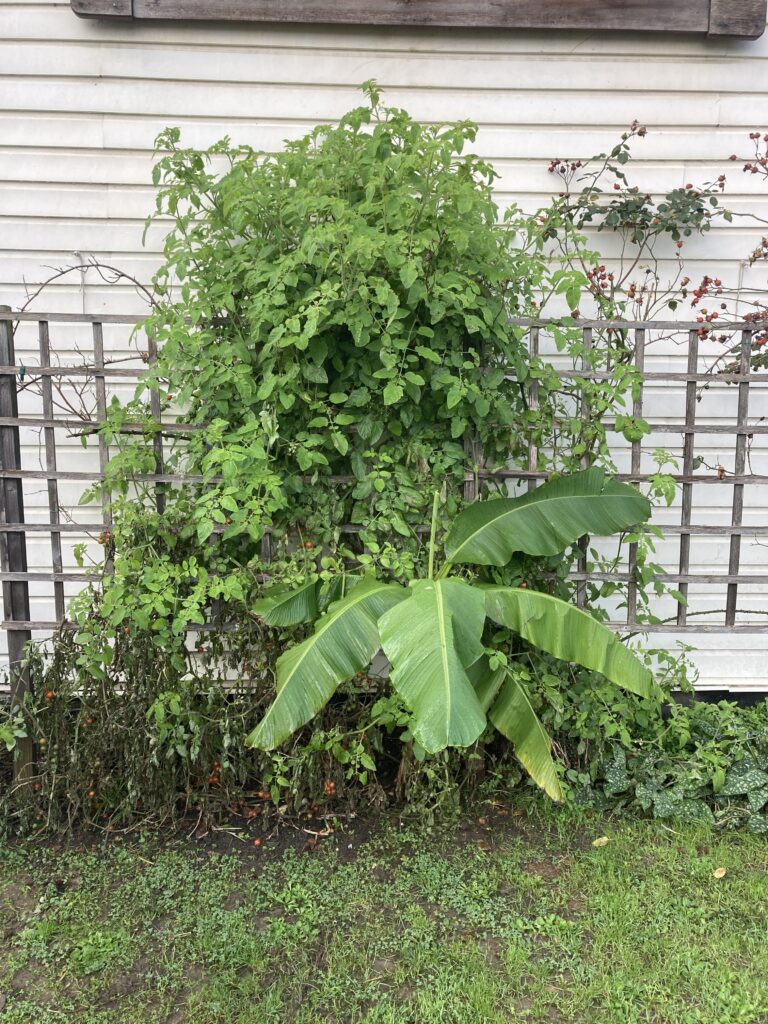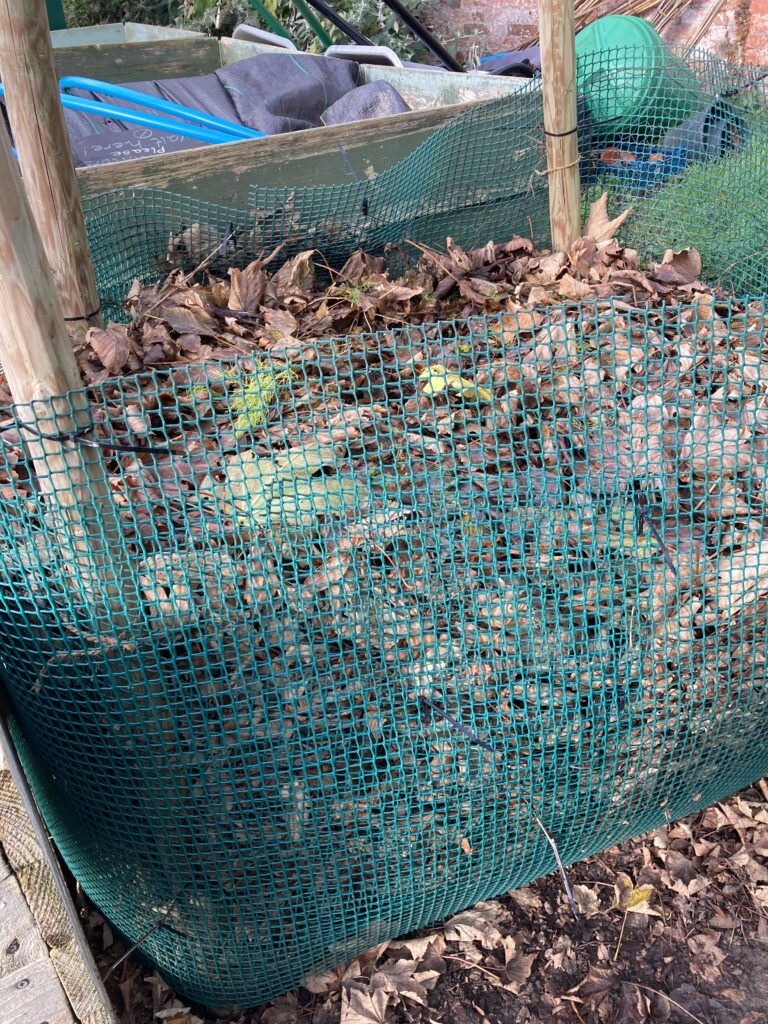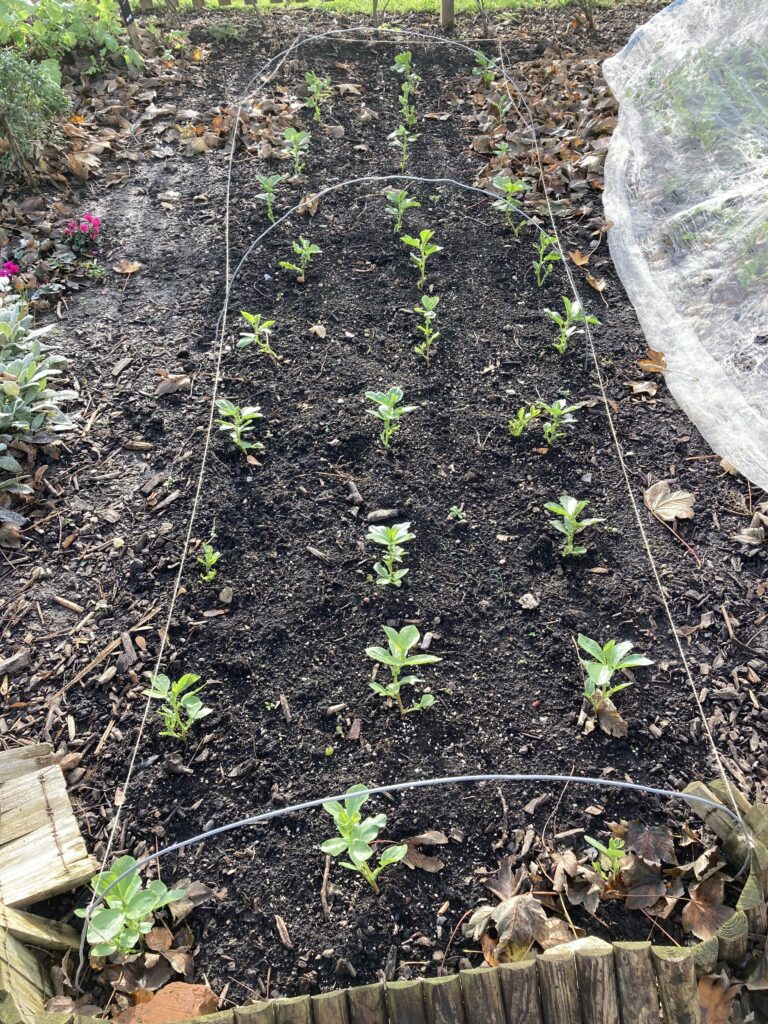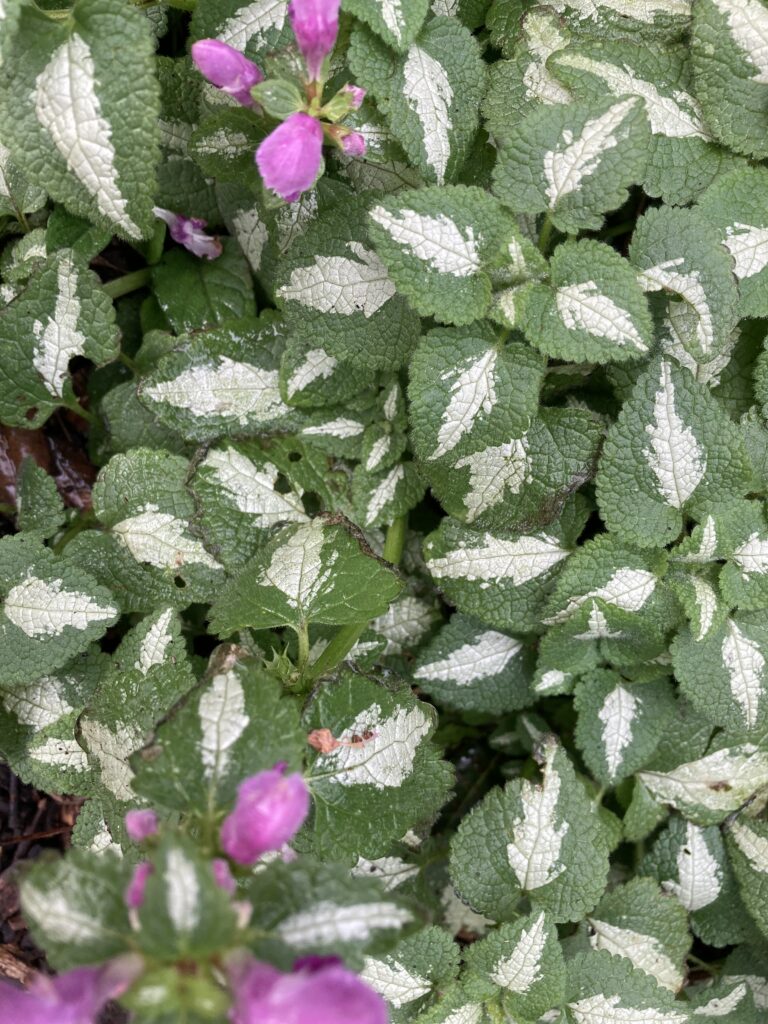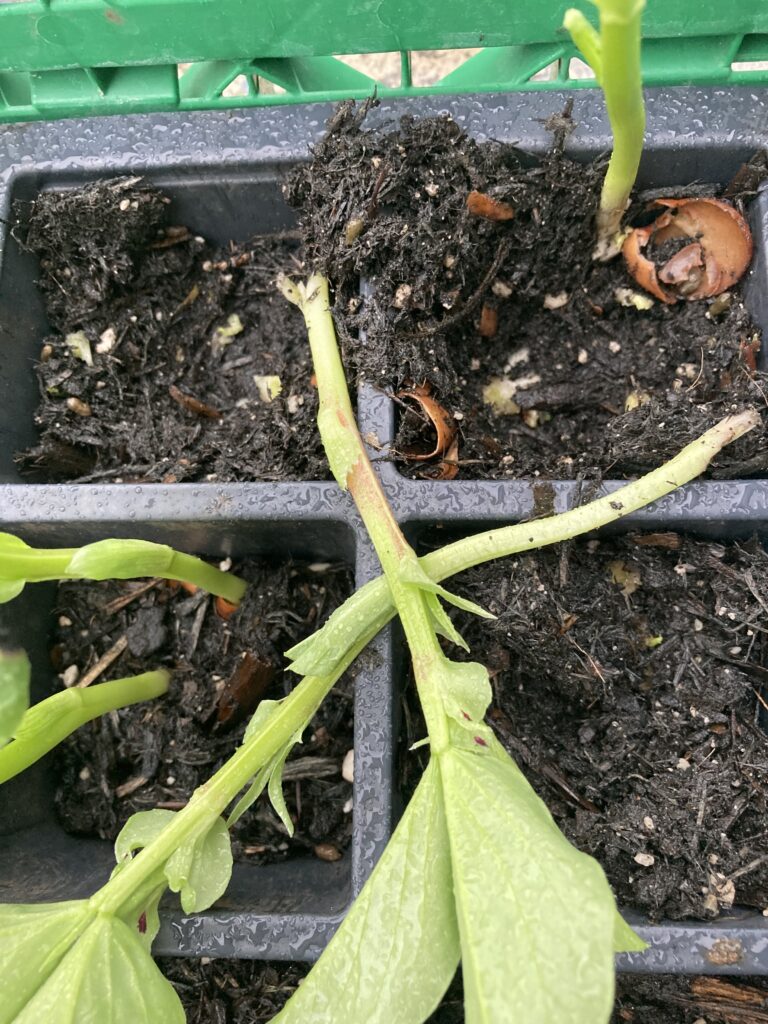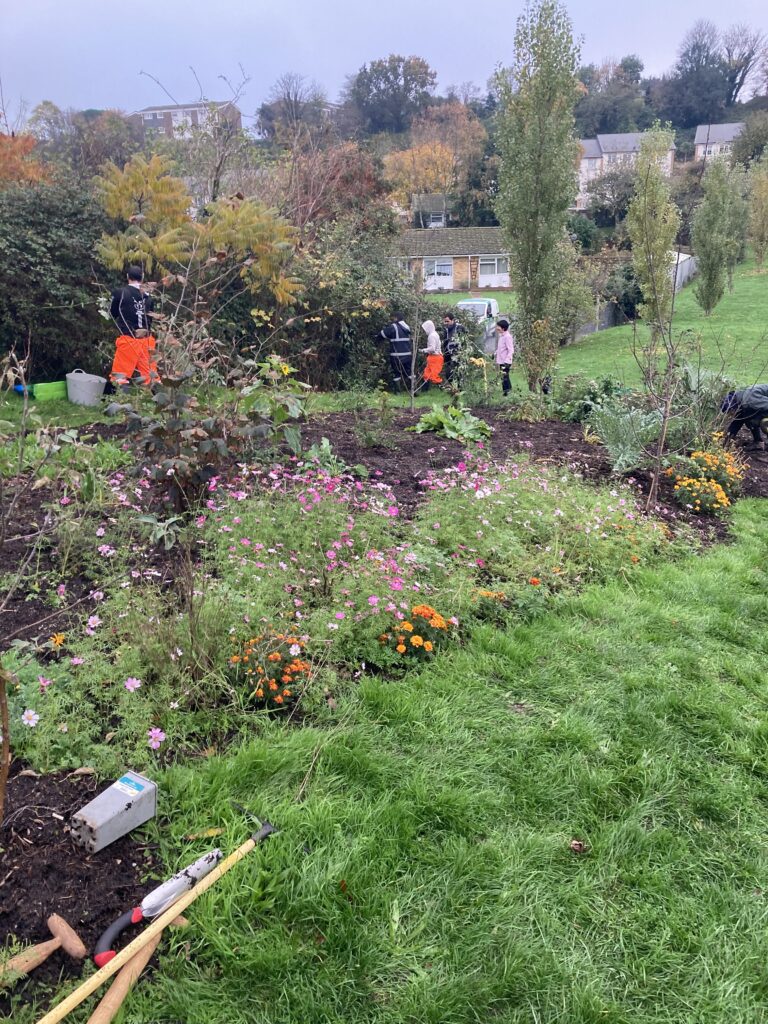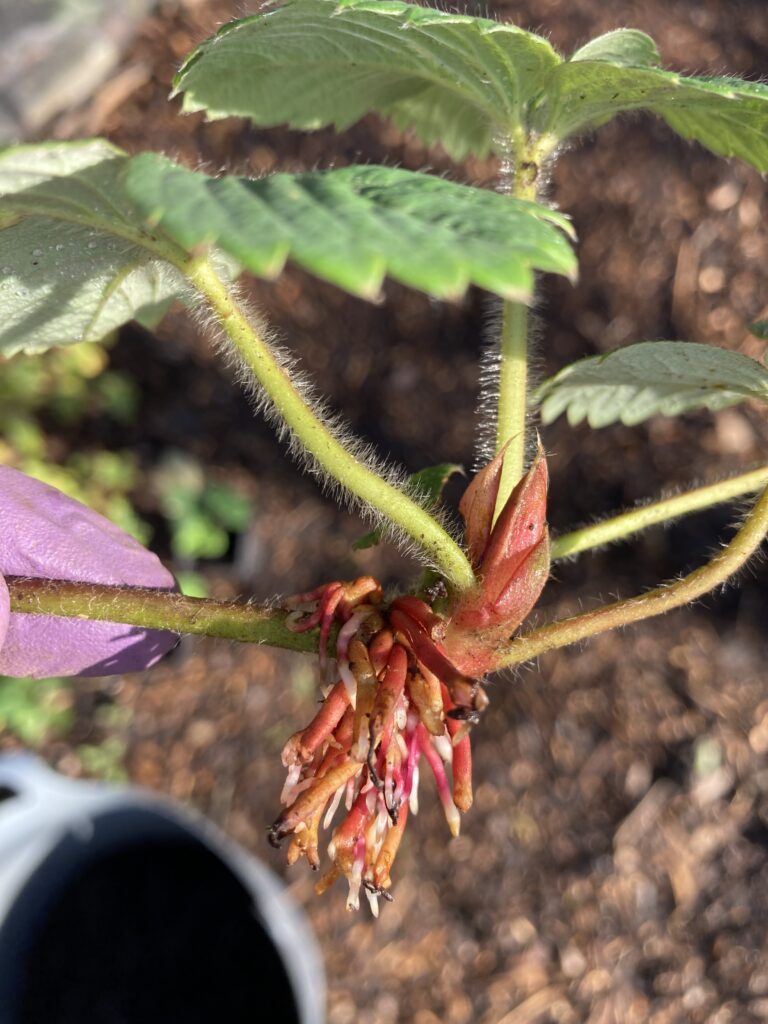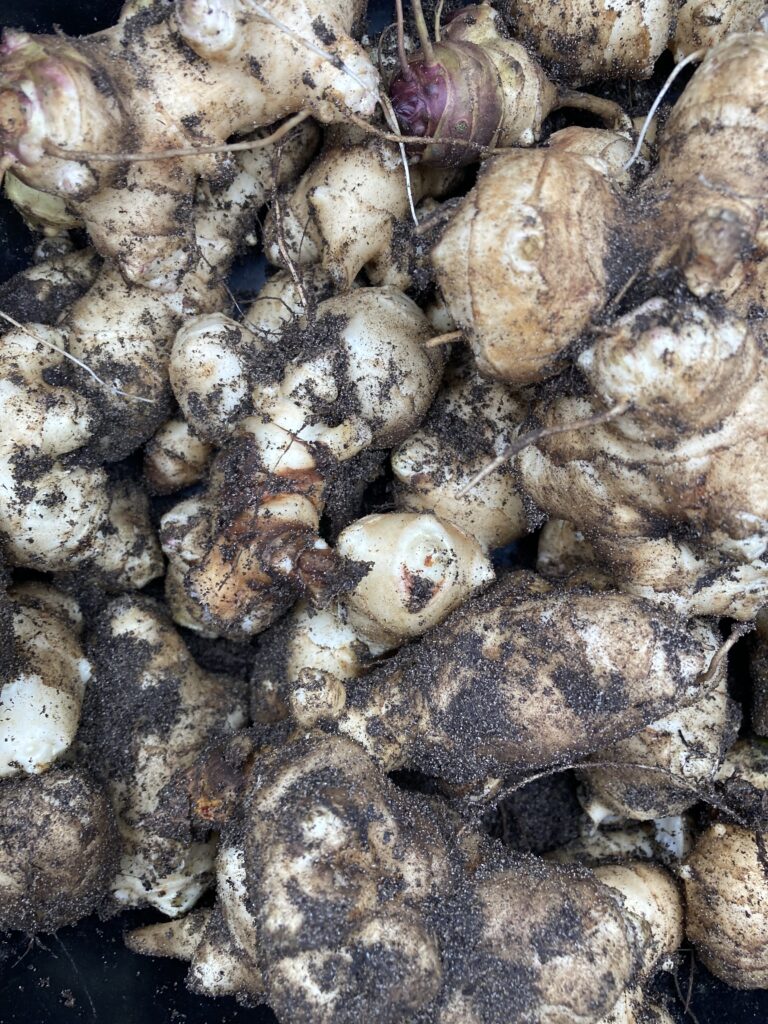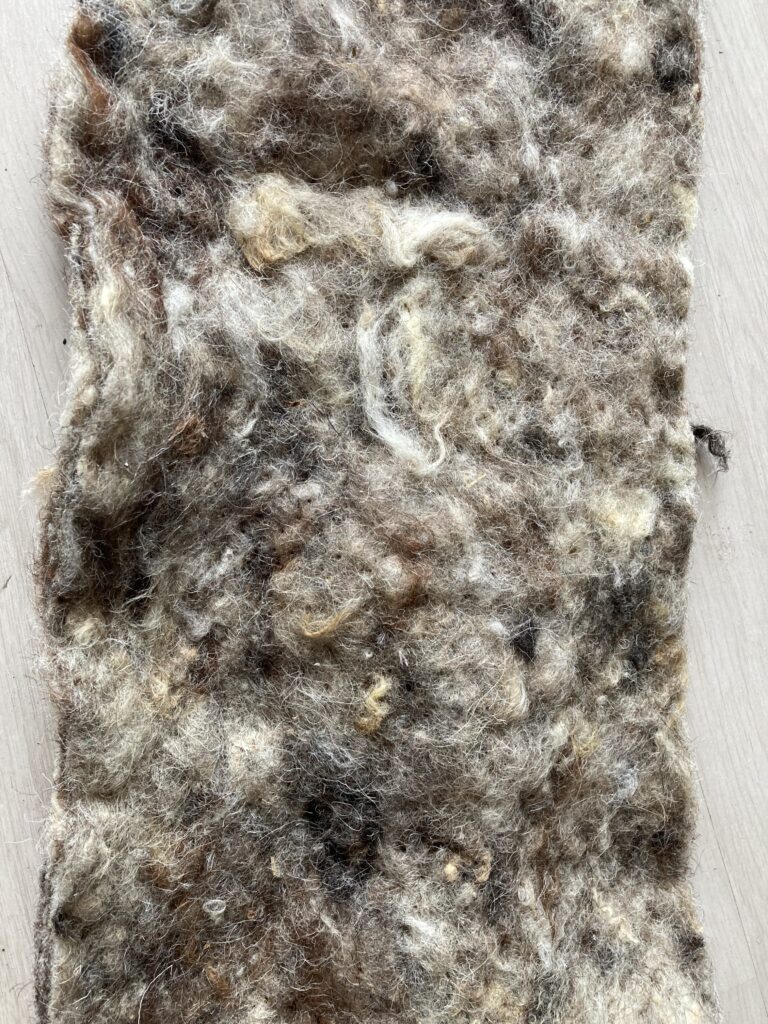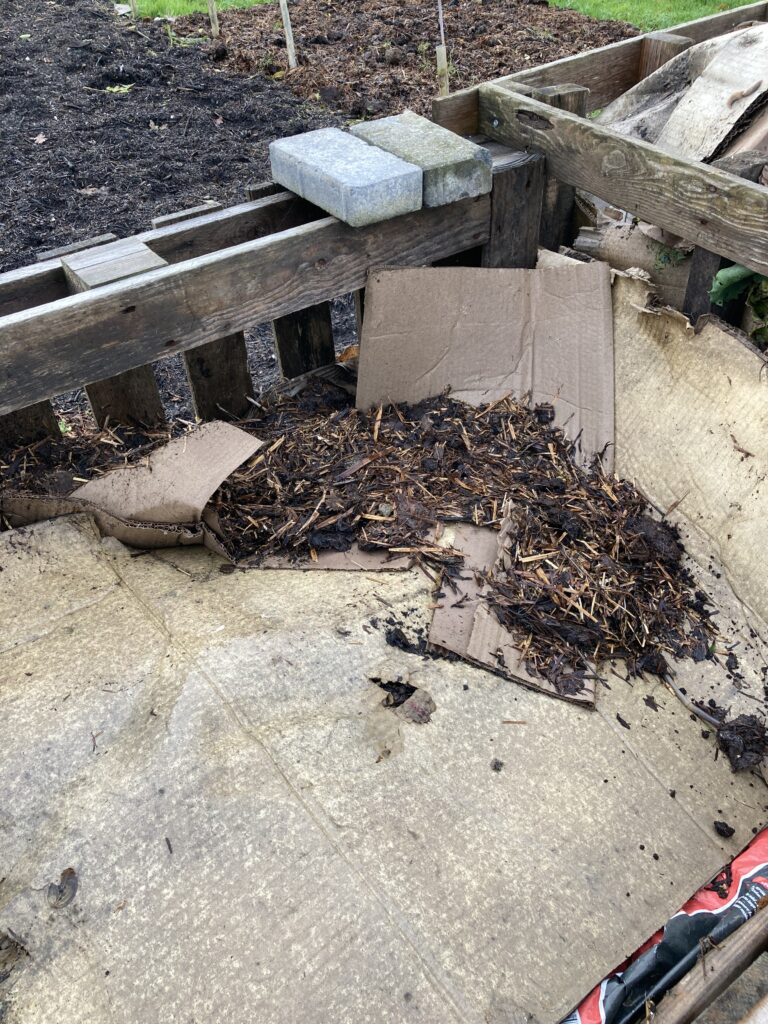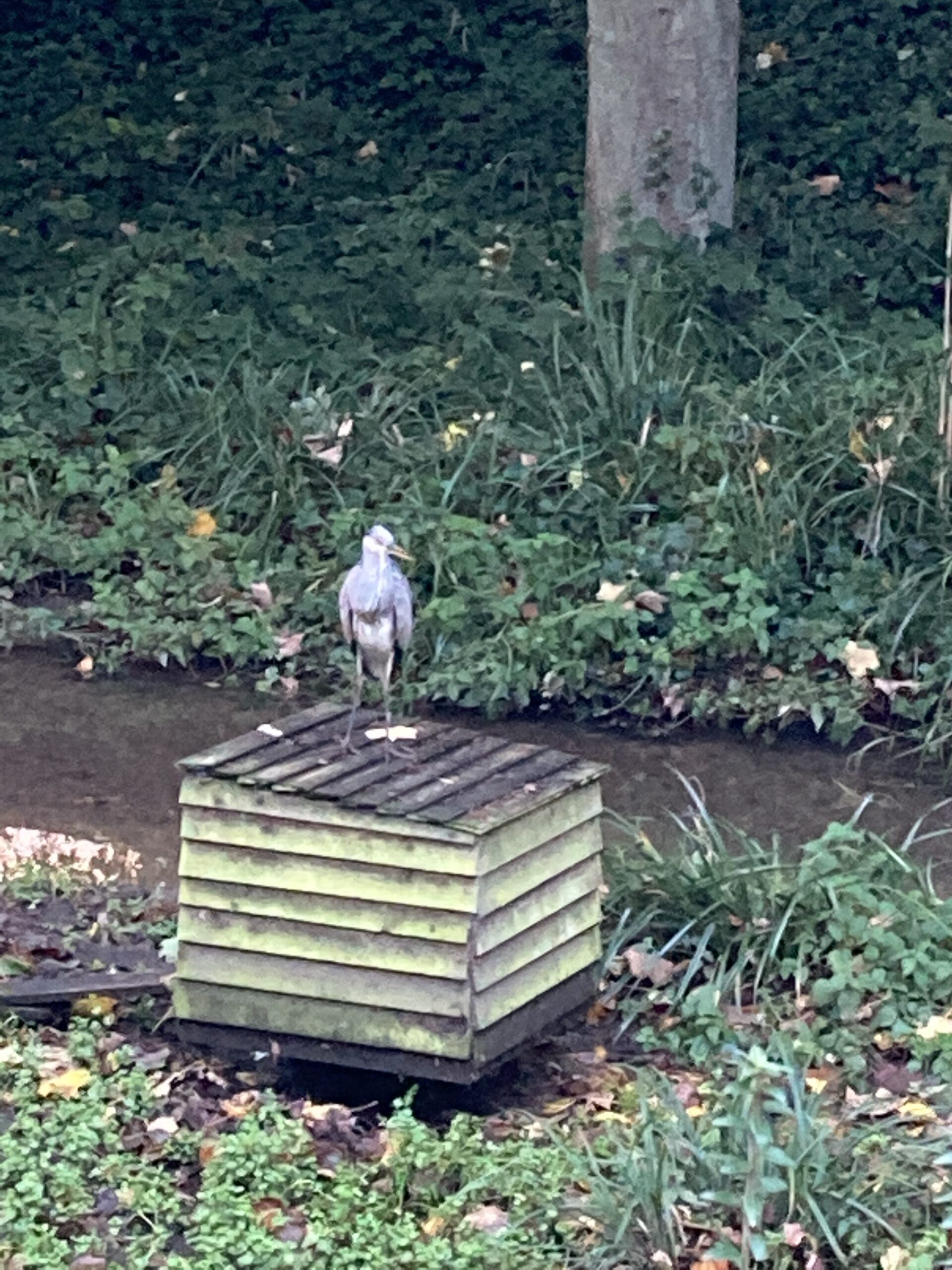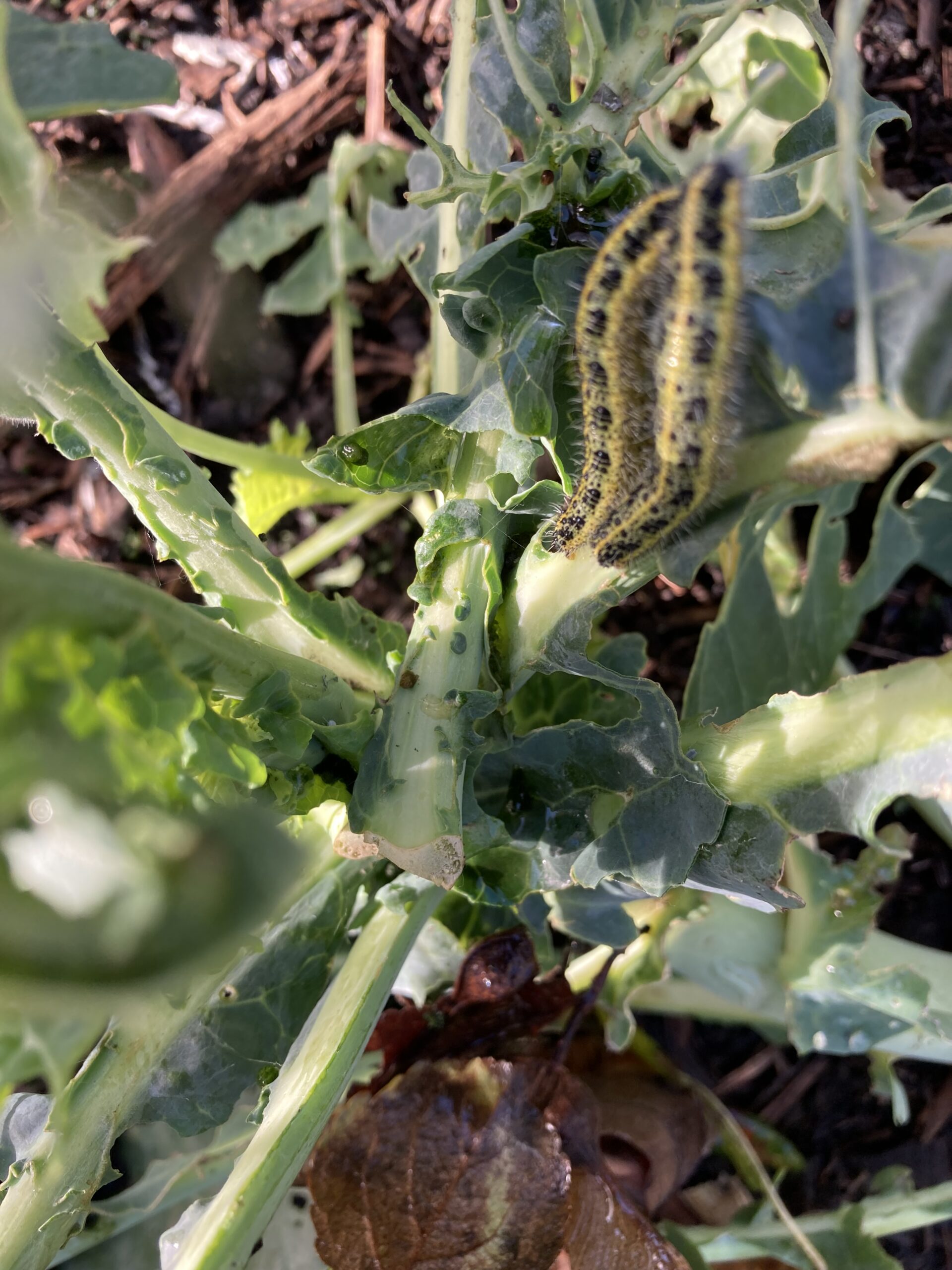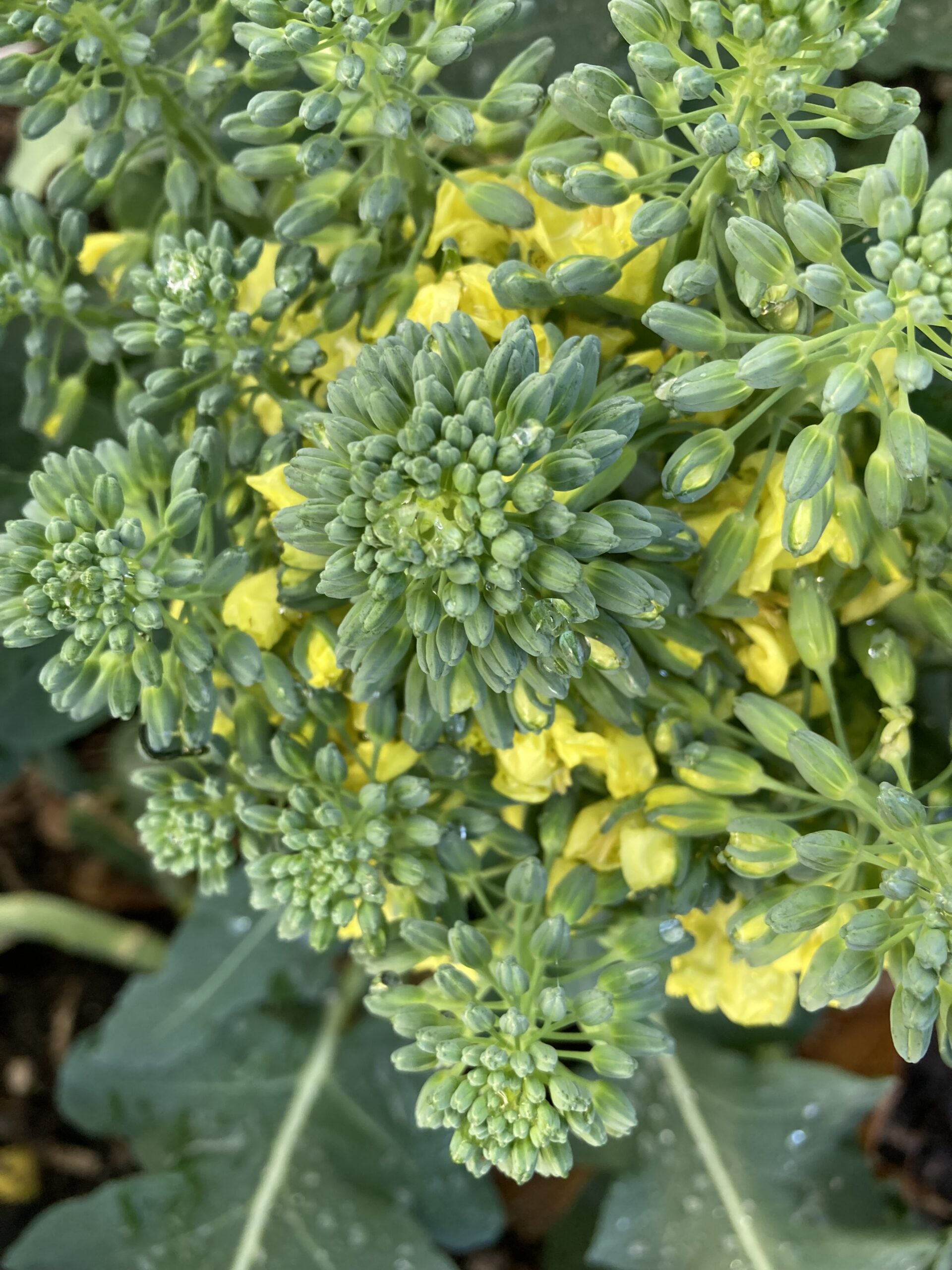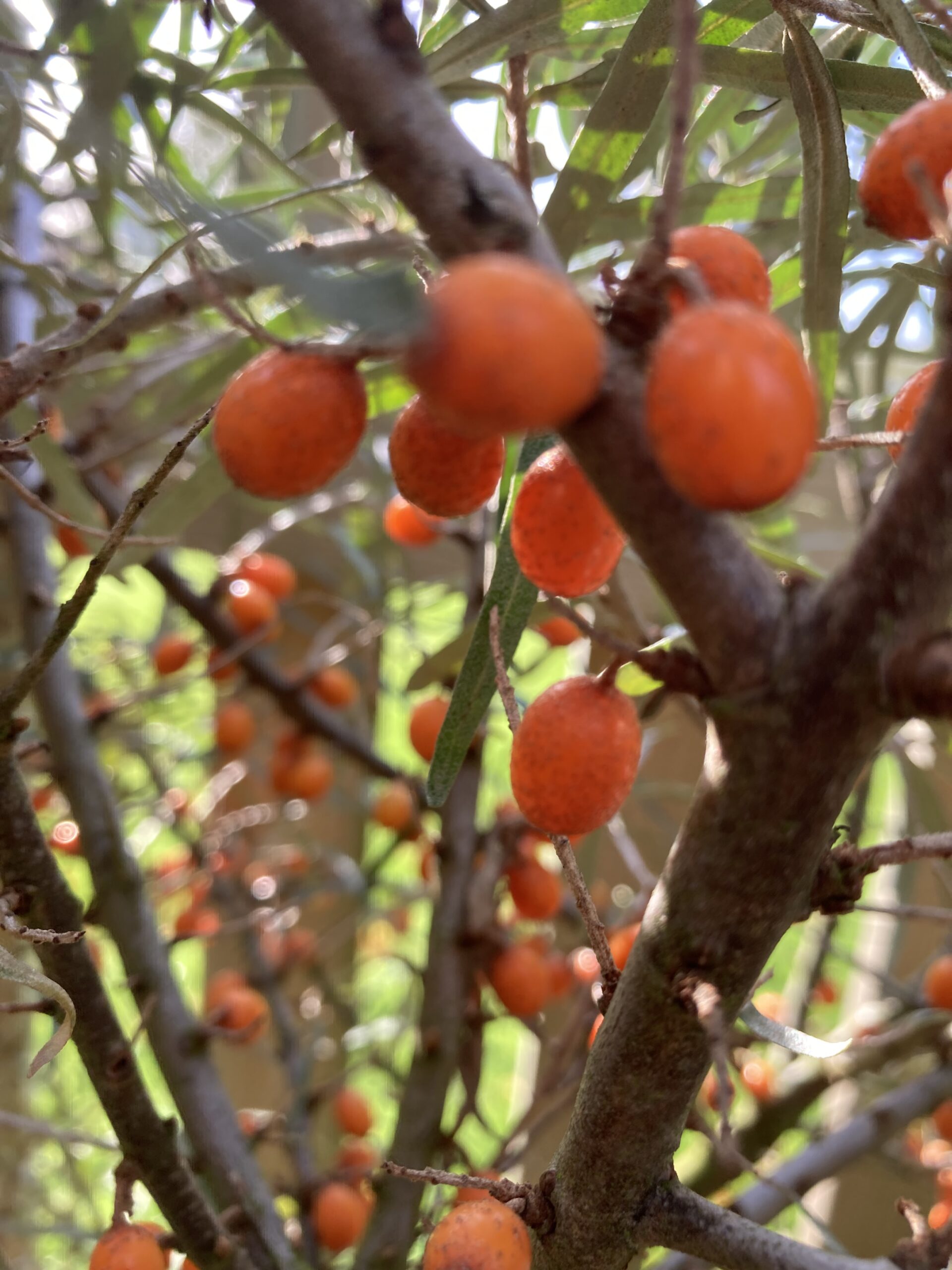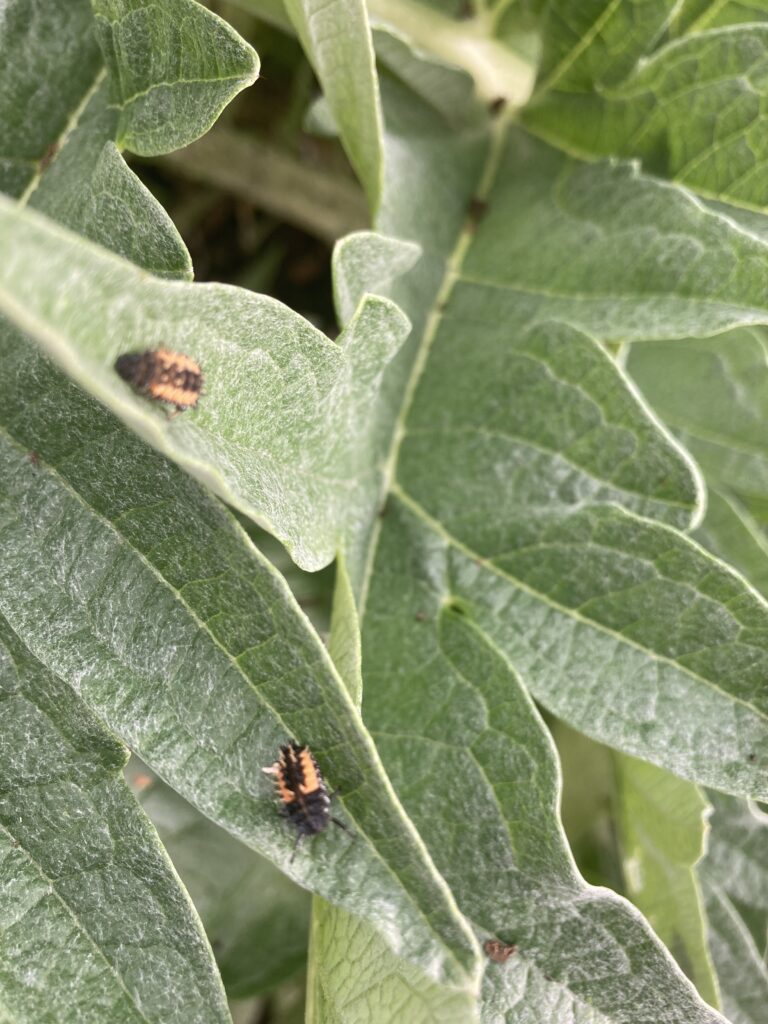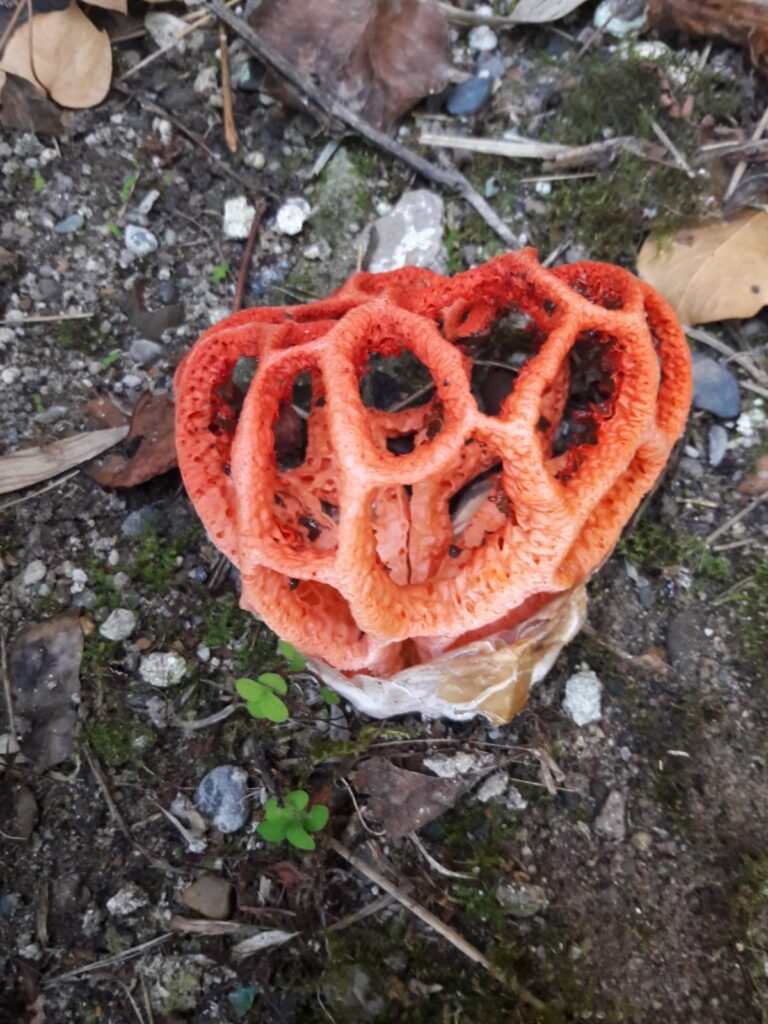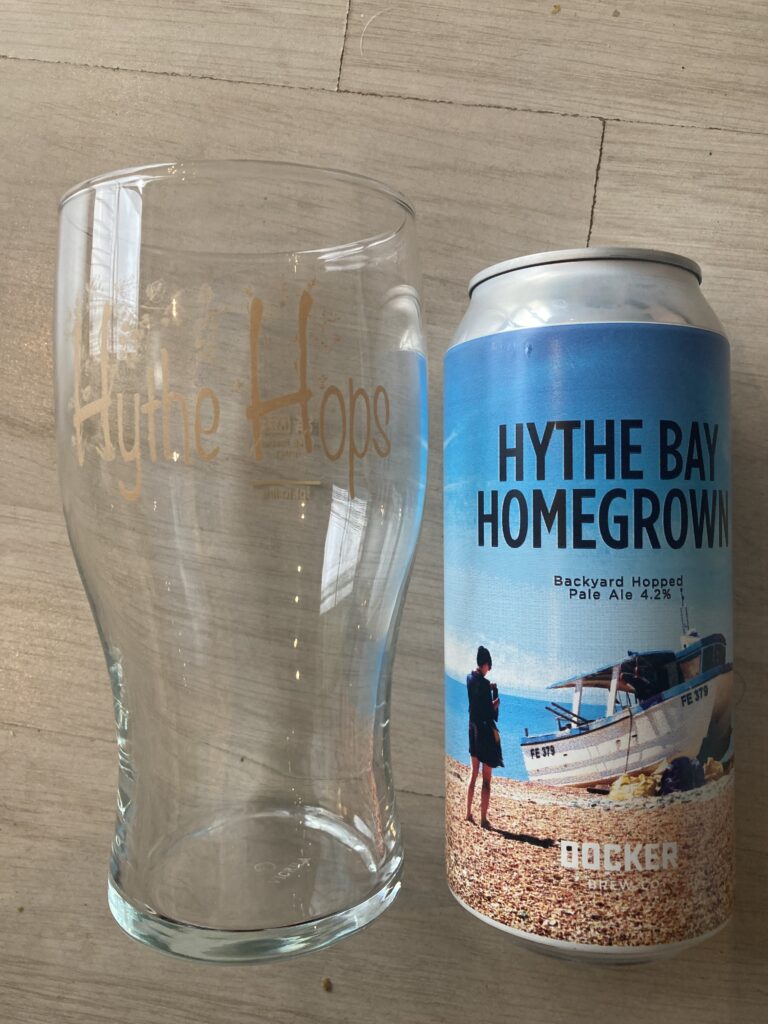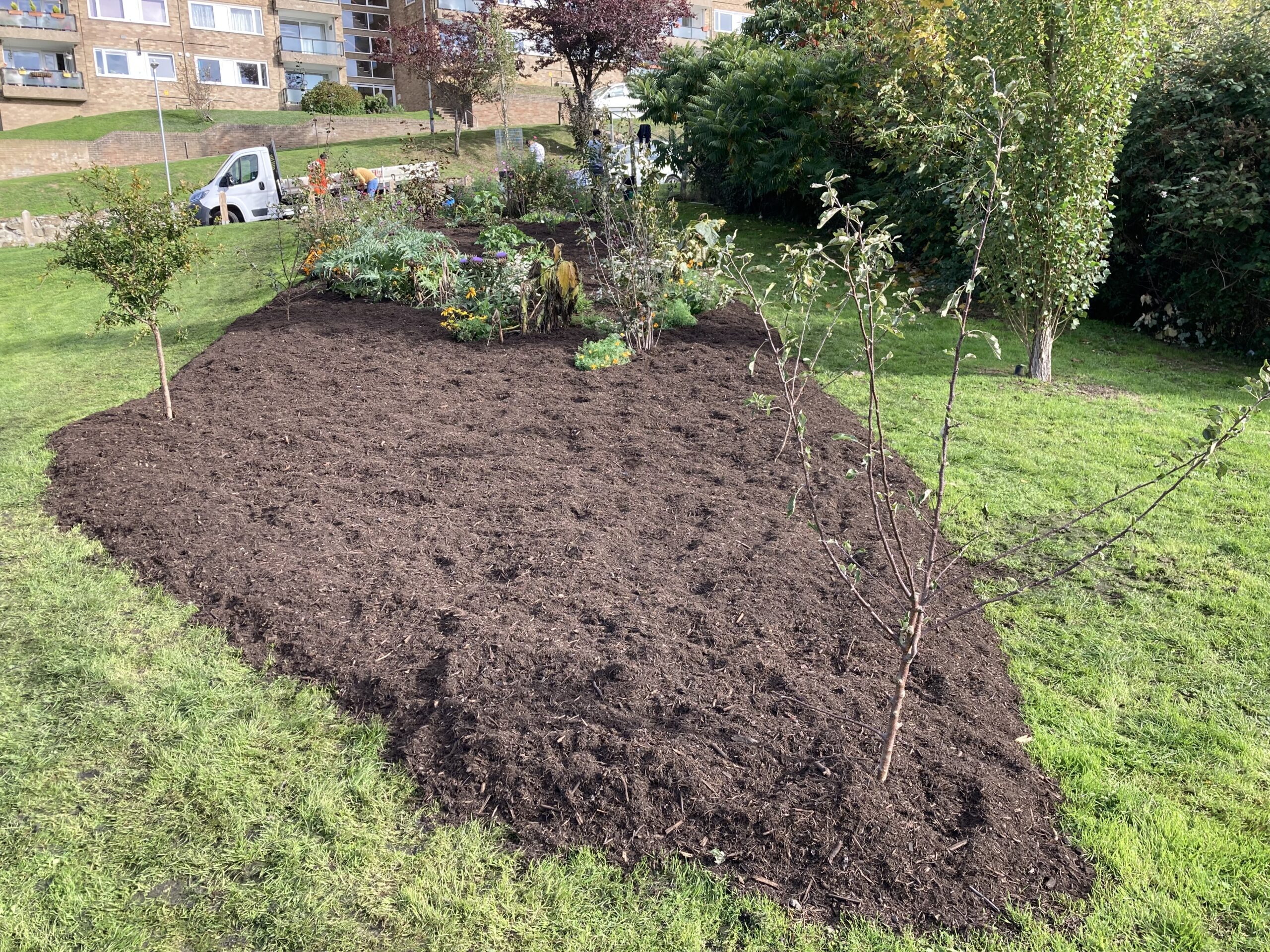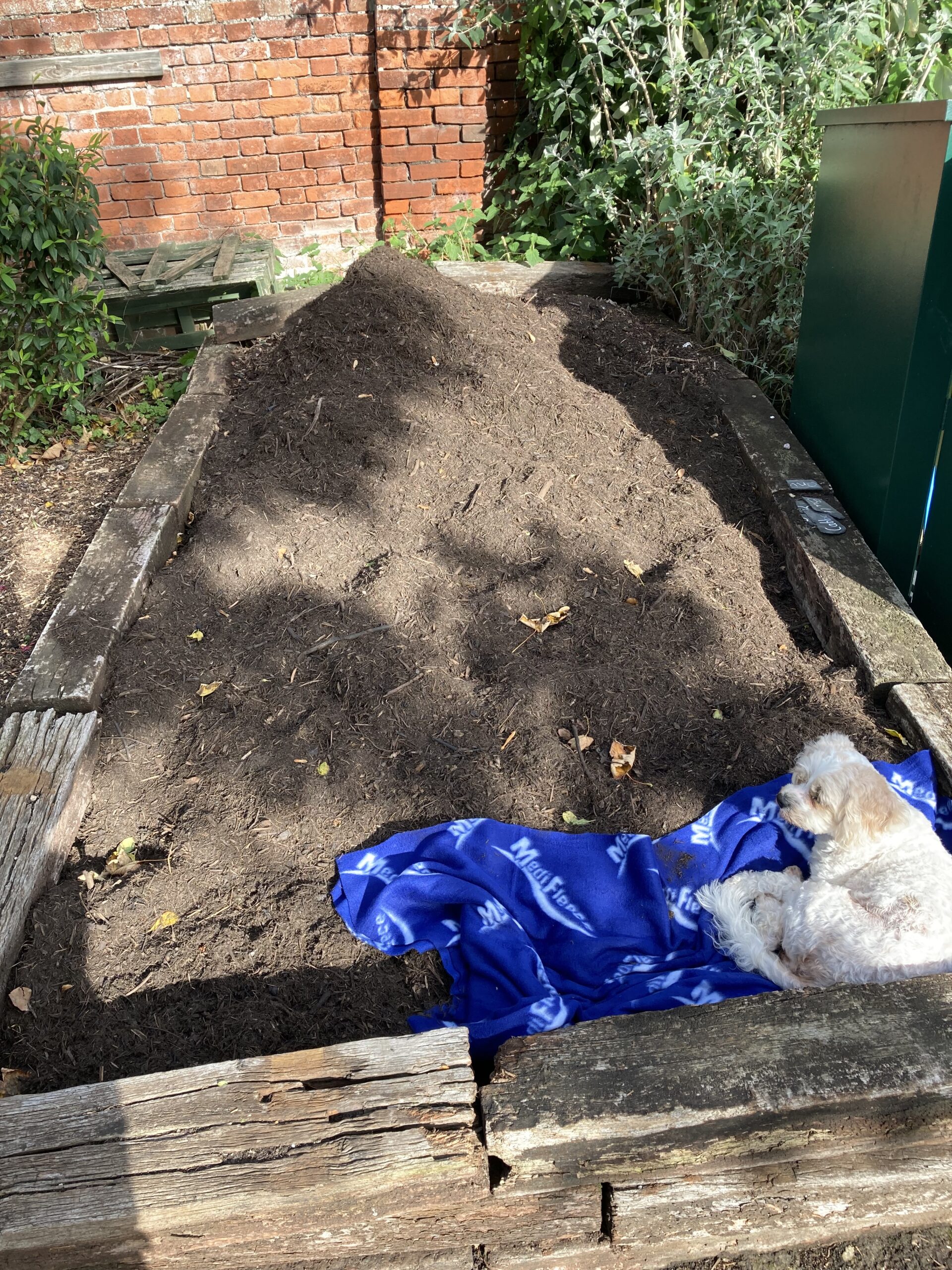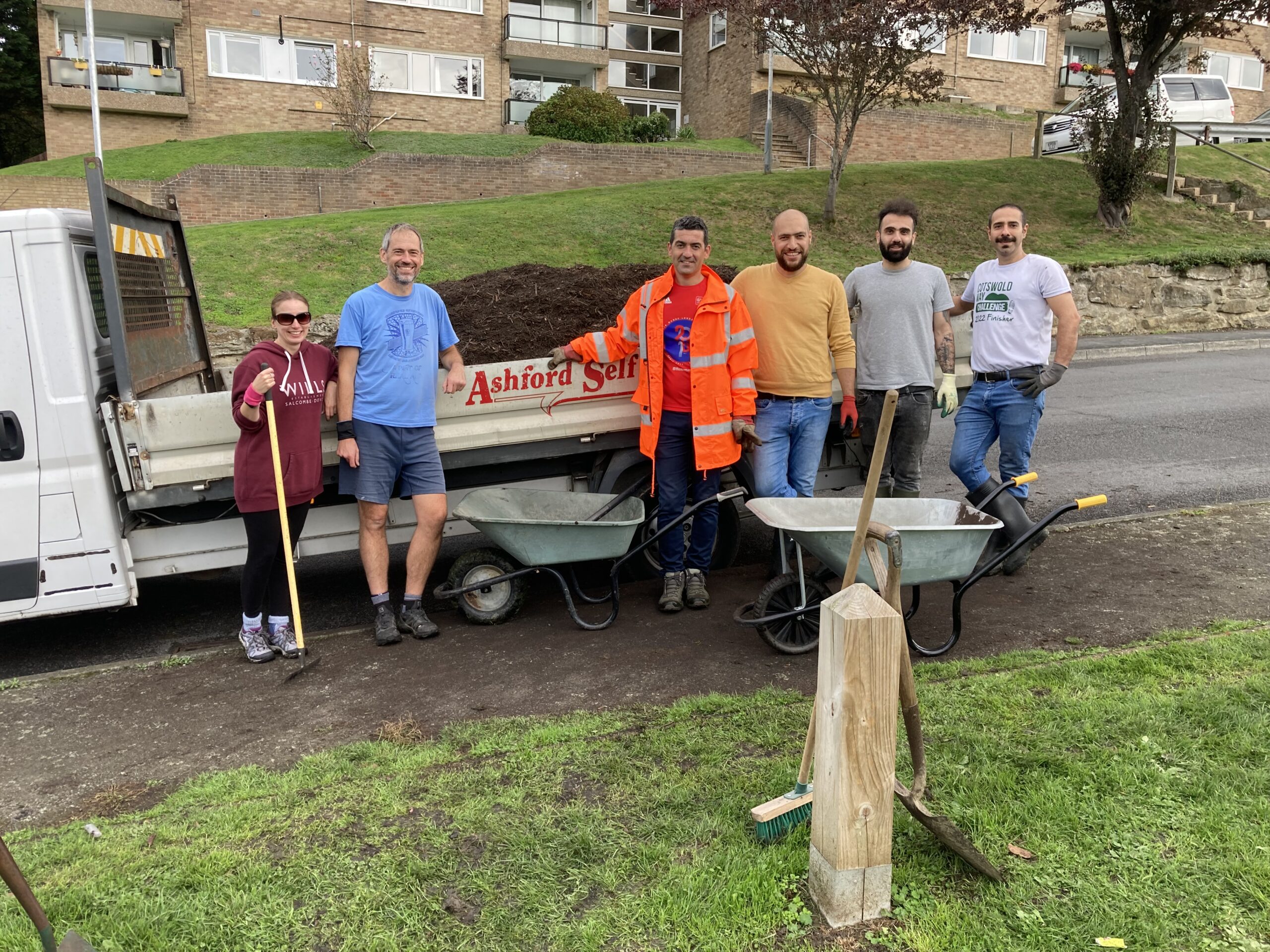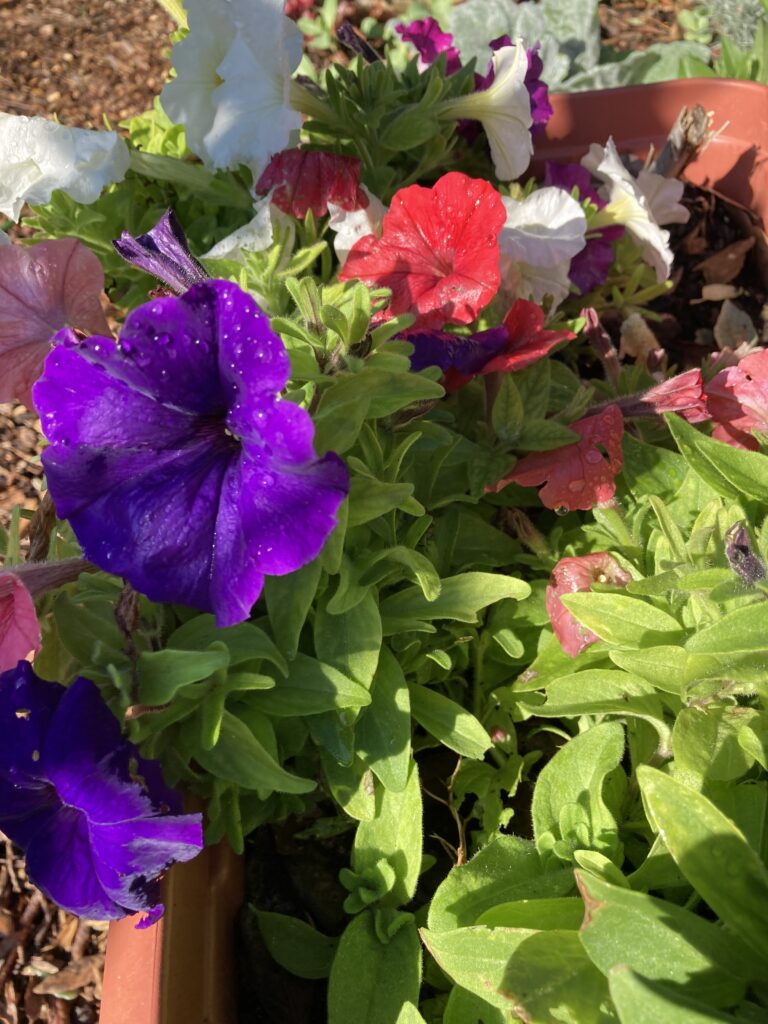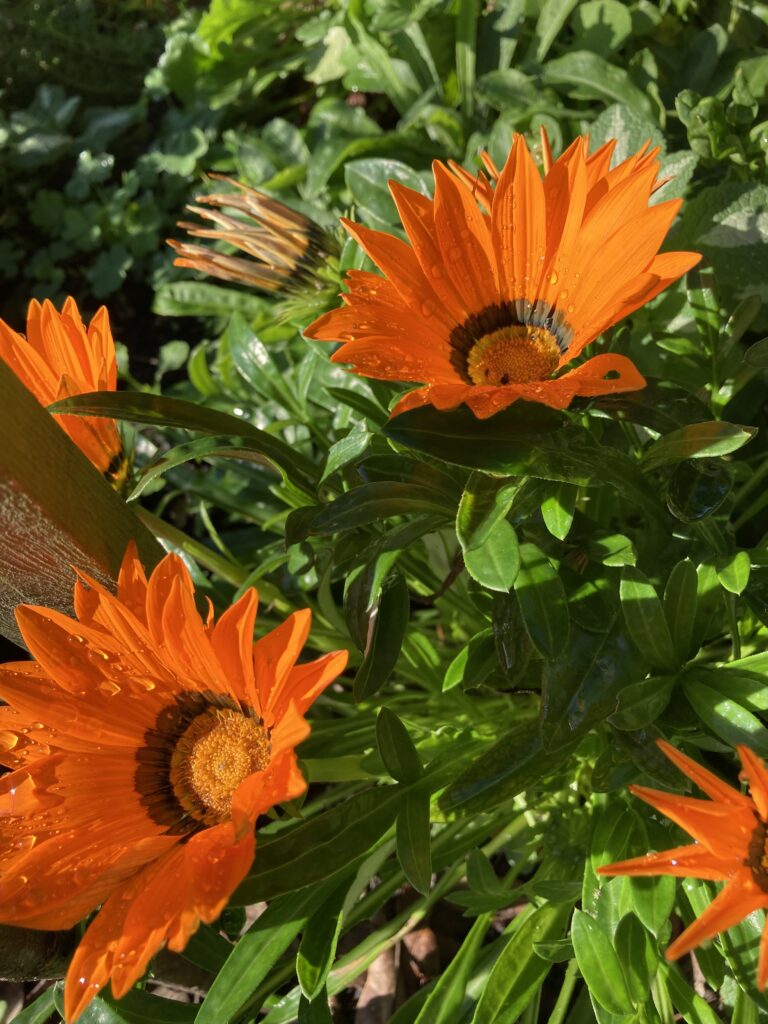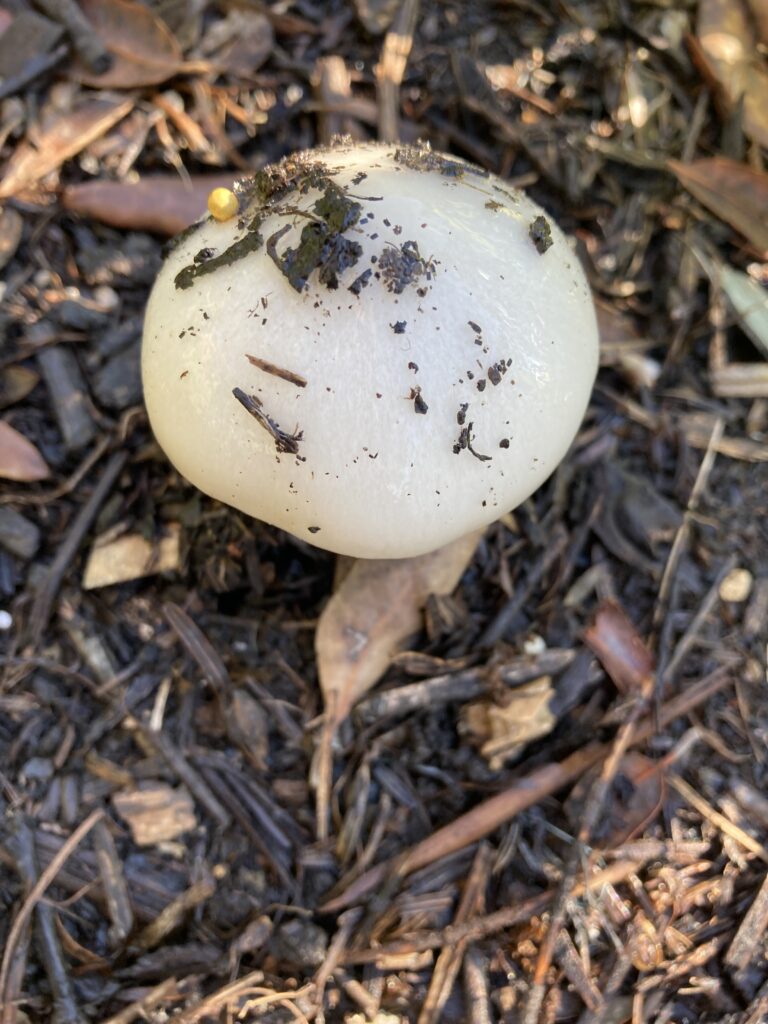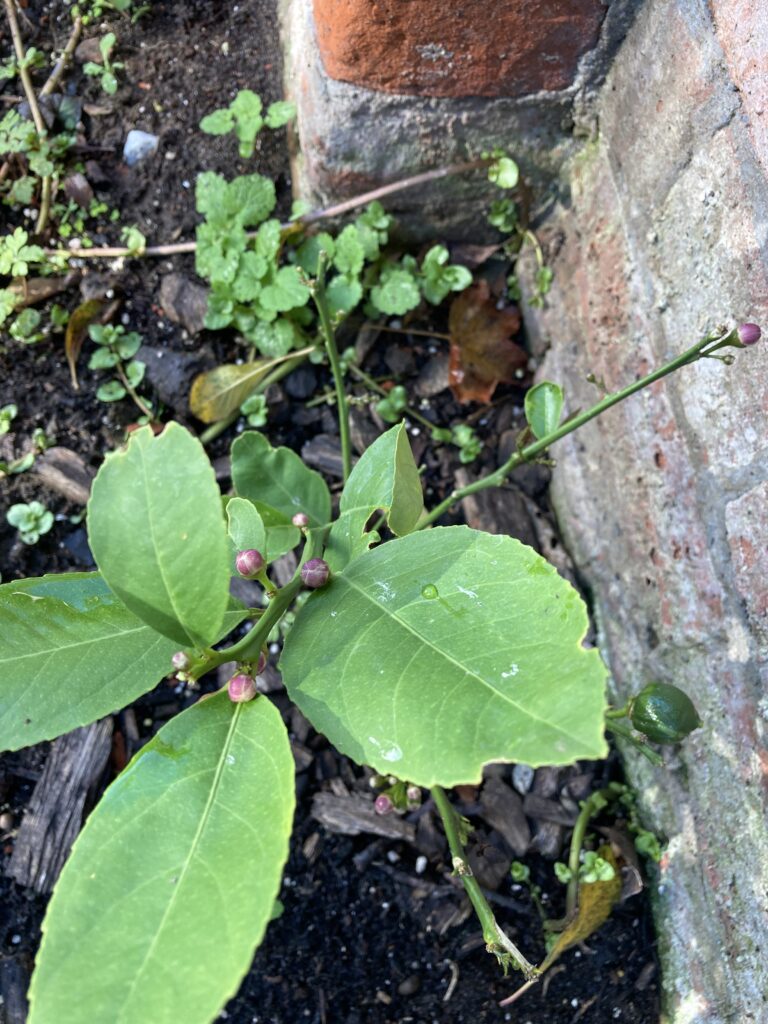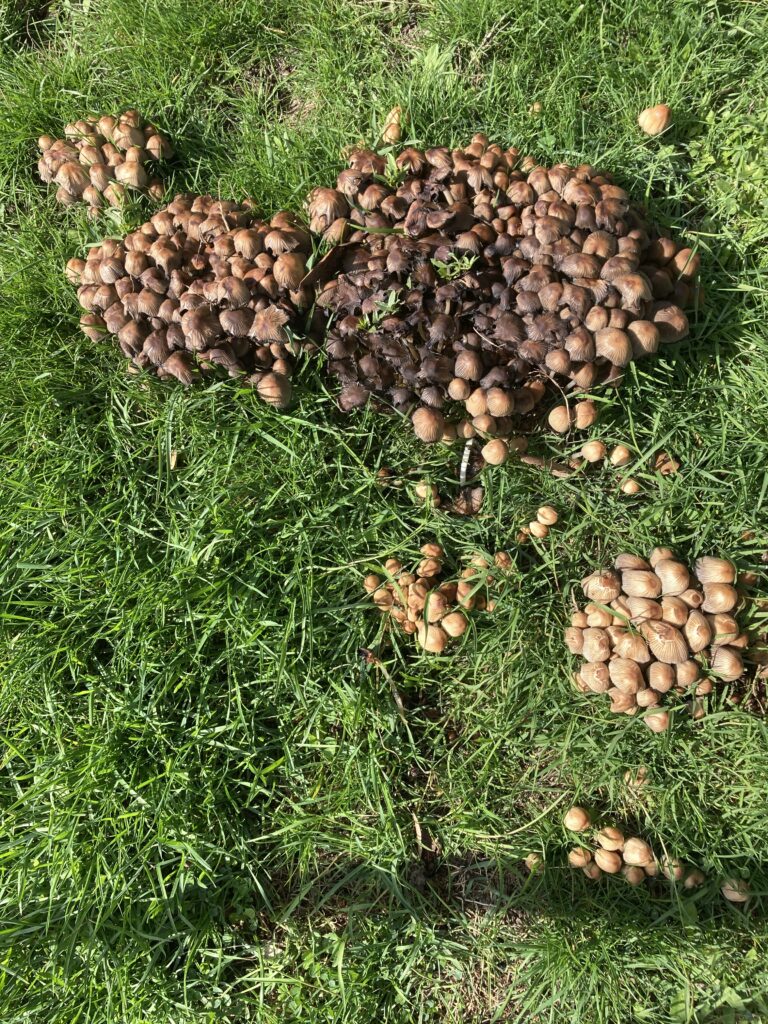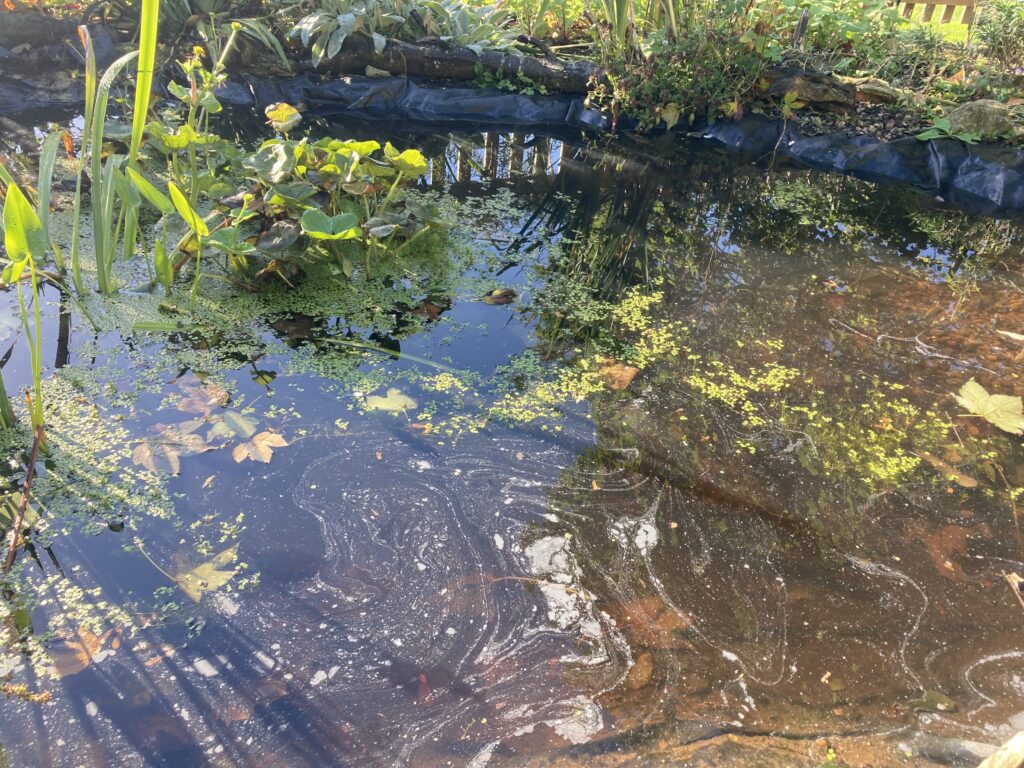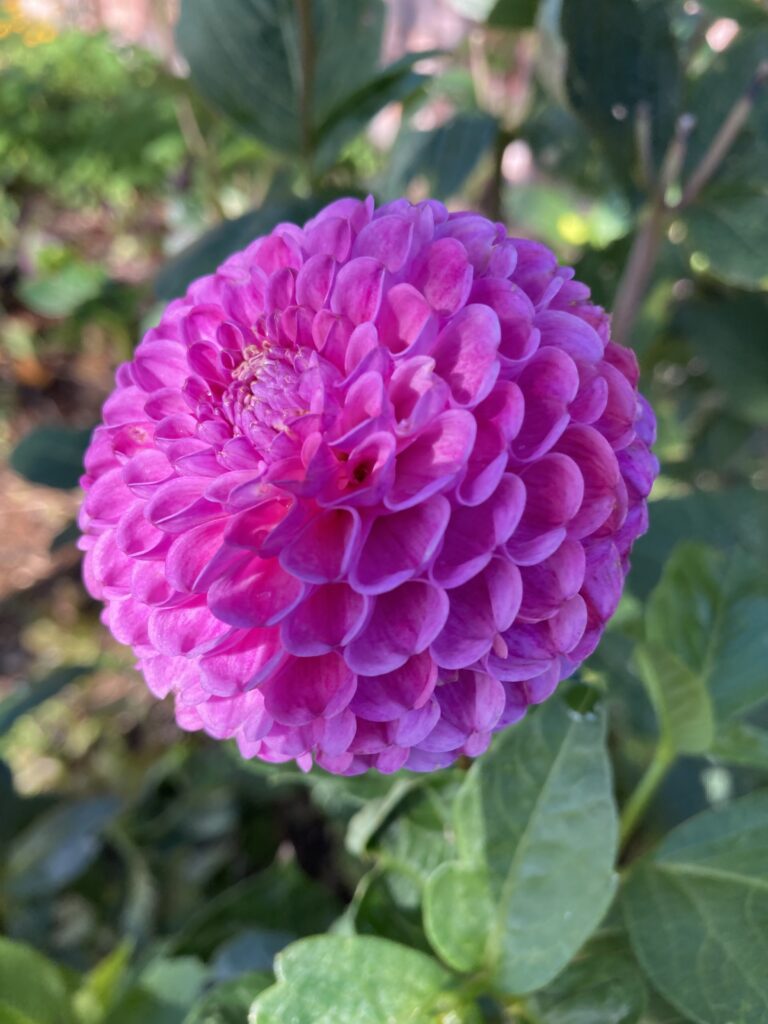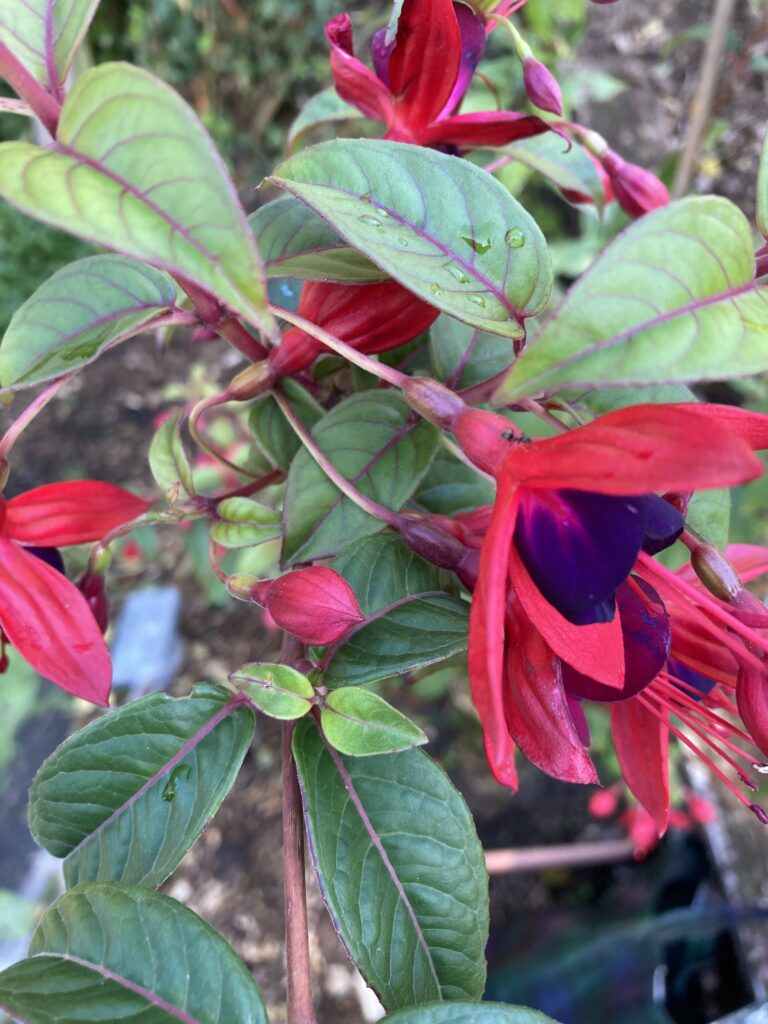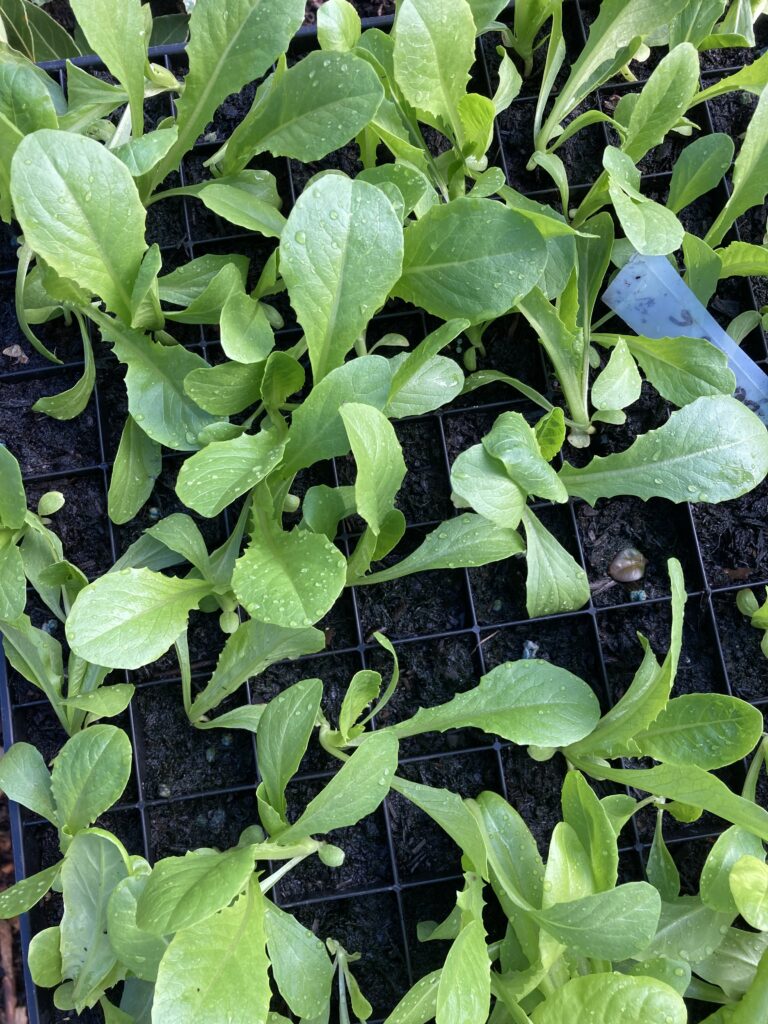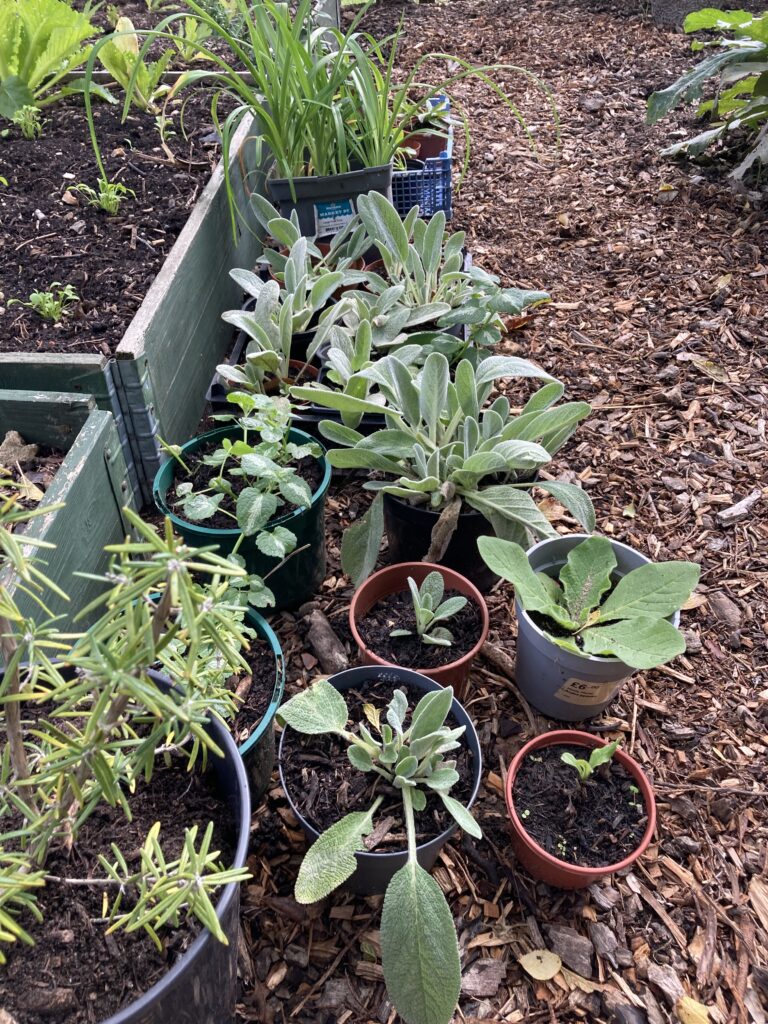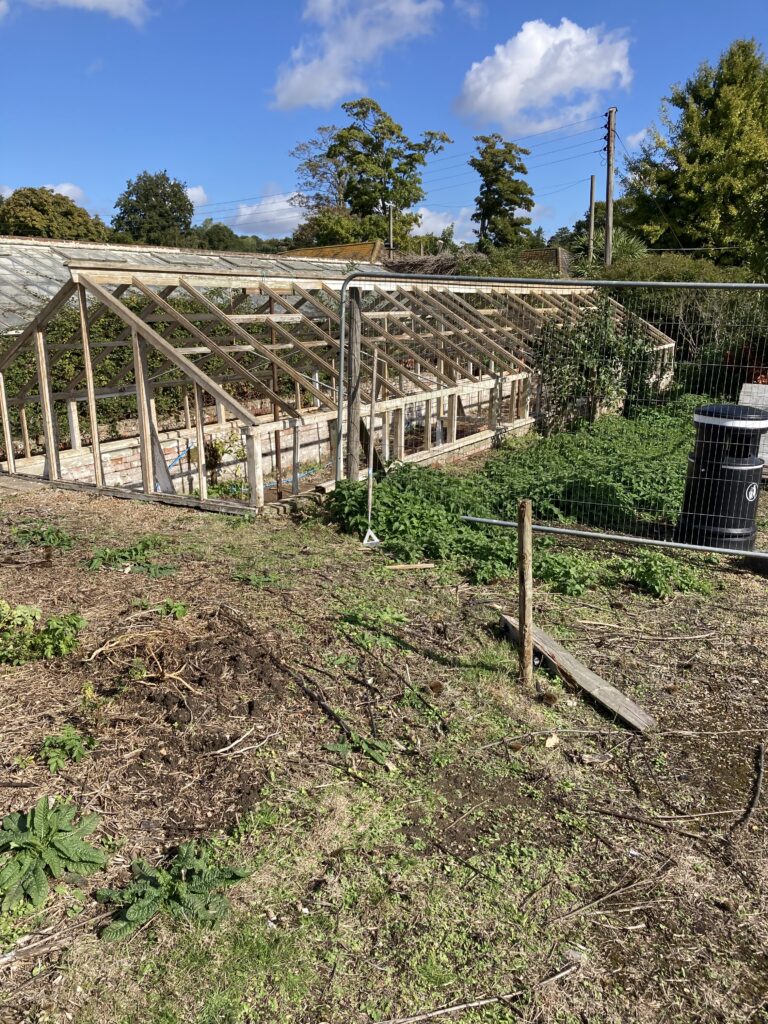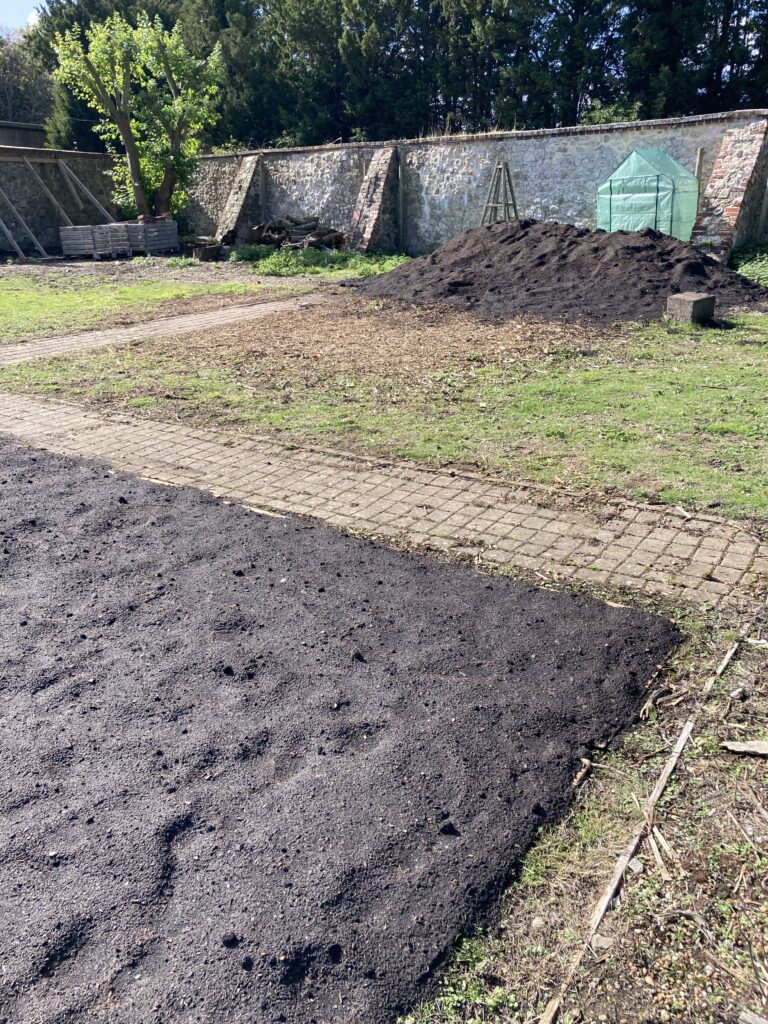Sandgate Community Garden Team Diary Entry for 4th December: A rubbish place to bury your acorns.
The Christmas lights are all up and on in the High Street and at last the weather is starting to be seasonably as cold as it probably should be. The rainfall for November was recorded locally as being 196.6 mm which is the most ever recorded for our records. We always report that just north of Sandgate there seems to be more rain, and indeed Pent Farm, Postling, where the Touchbase garden is, had a recorded rainfall of over 250mm. It is extremely soggy out there however the Sandgate gardens are not at all muddy because the beds are covered in compost and the paths with wood chips – we never have to scrape our boots after working in them.
In spite of some showers, a few of the men from the Napier Barracks came out to help with some physically demanding chores. The small orchard at the Sandgate Park needed clearing of weeds and liberally mulching with compost which had to be bagged up, transported and carried to the site. Once that was done we planted some spring bulbs and it is all looking much tidier. In October we had reported that the Bramley apple tree there was in full flower, presumably thinking it was spring, and now it has several small apples pictured below. We will have to see if it can start again when spring really does return and send out more blossoms.
When we went to the compost pile to start putting it into bags, you could see that parts of the pile had been disturbed and on investigation it became clear that all the local squirrels had been busy doing what squirrels do best this time of year, burying their acorns for them to retrieve at a later date. Unfortunately these squirrels will be disappointed to find their stash will be gone but luckily they usually play it safe and deposit food stores in more than one place. Forgotten acorns put out some roots having been conveniently planted.
On Wednesday at Enbrook Park a huge bumble bee was seen in the garden looking very drowsy, luckily one of our gardeners spotted it and put it carefully onto some Calendula flowers so that it could get to some nectar and be revived. We discovered that surprisingly there is one bumblebee species, the buff-tailed Bombus terrestris, which is active during winter, even when there is snow on the ground.
At the garden sessions, we often share any gluts from other gardens. It was a complete surprise to find that there were some massive celery plants at Fremantle, which had to come out to make way for a few broad beans. The ground at Fremantle Park is far wetter than at the Enbrook Park garden site where the celeriac and celery suffered from being dry during the late part of the summer. However the same plants at Fremantle survived well with no water, going on to produce some fabulous vegetables. It just goes to show when you are looking over that fence to eye up what is being grown by somebody else that growing some decent vegetables is not just about how much care and attention you have given but also about the environment.
What’s next?
- The alley needs clearing between Meadowbrook and Chichester Road
- Finish planting the last of the bulbs
- Have we finished potting up the strawberry plants?
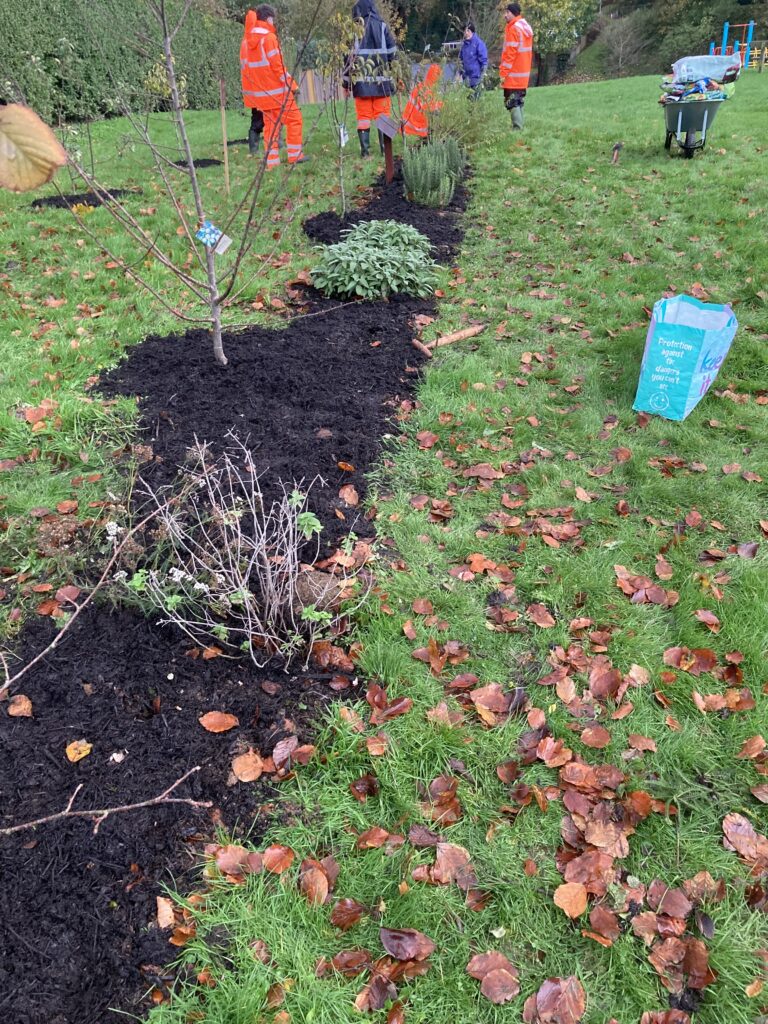
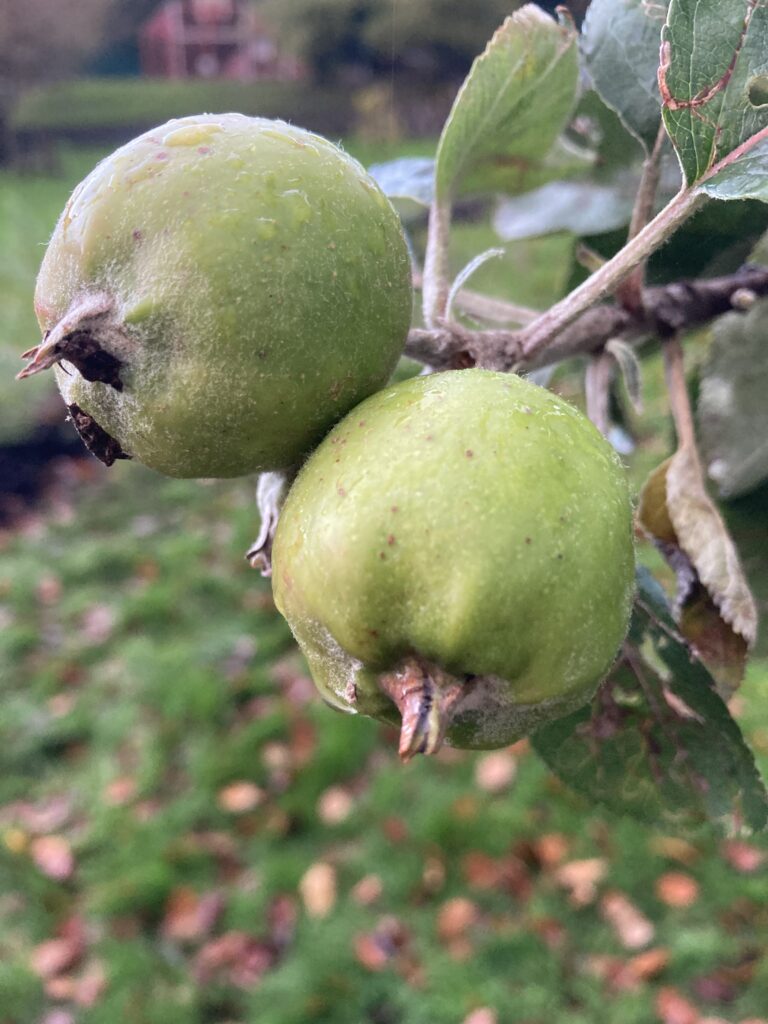
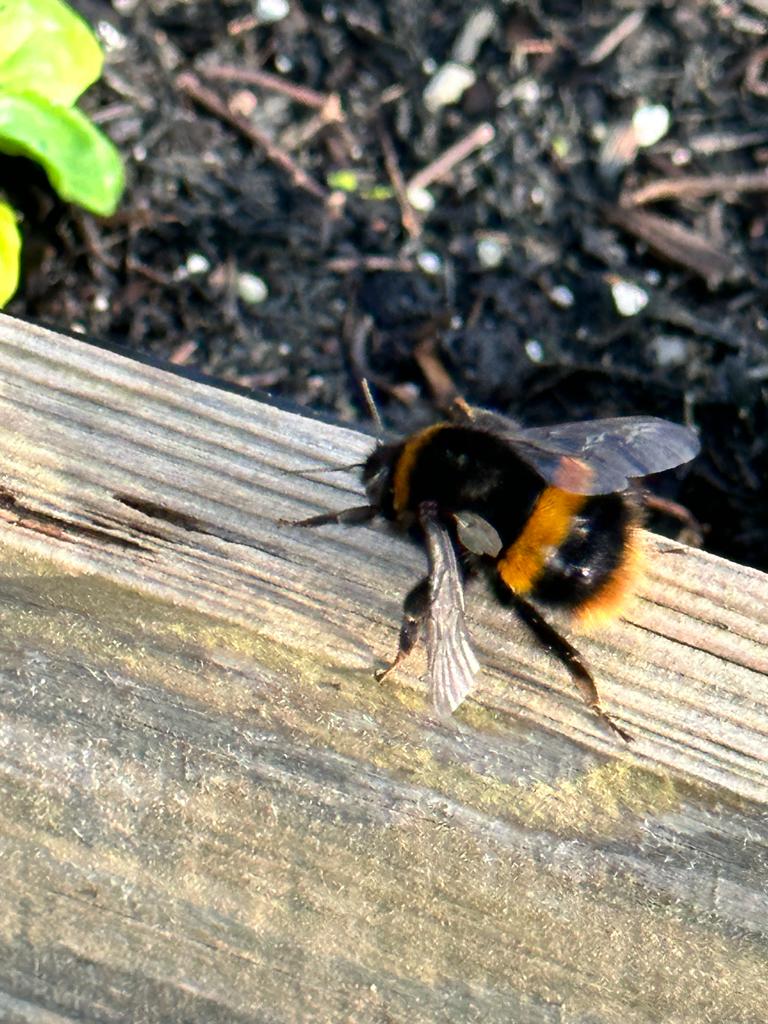
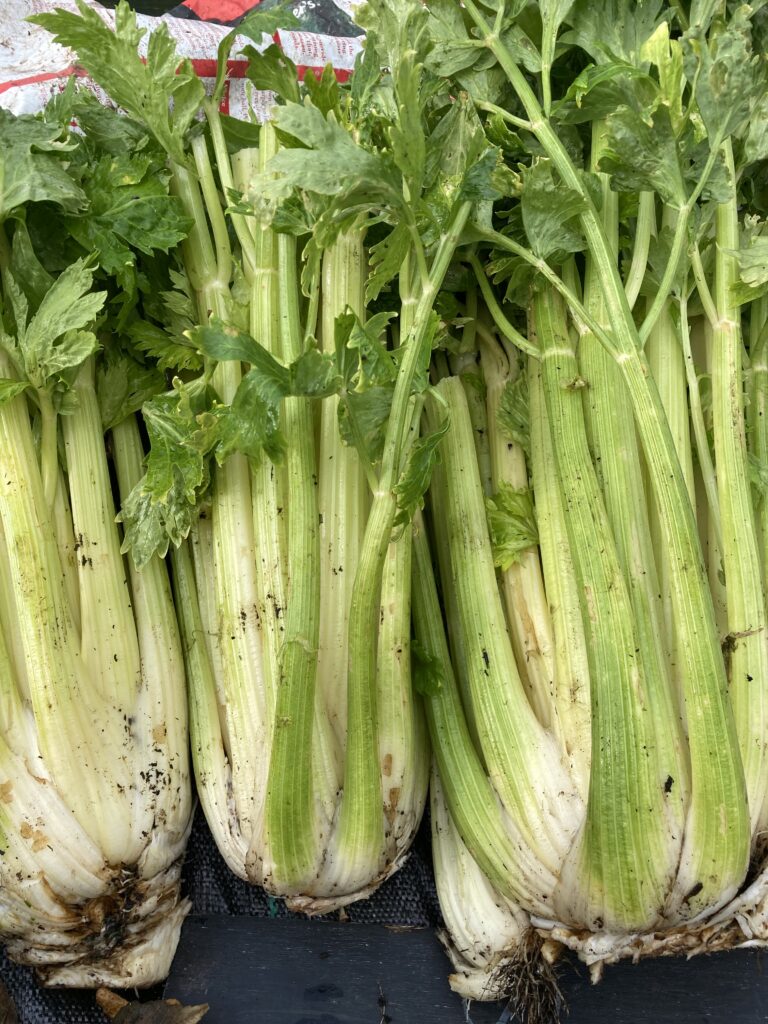
This weeks update from the Sandgate Community Garden Diary.


